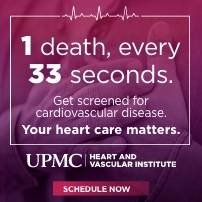October 6th, 2021 by WCBC Radio
Maryland Deputy Transportation Secretary Sean Powell met with Allegany County officials today to discuss the Draft FY 2022 – FY 2027 Consolidated Transportation Program (CTP), which details the Maryland Department of Transportation’s (MDOT) six-year capital budget. The meeting was part of MDOT’s annual tour of 23 Maryland counties and Baltimore City to update local officials and the public on the Hogan Administration’s $16.4 billion investment over the next six years in transit, highways, motor vehicle services, the Helen Delich Bentley Port of Baltimore and Baltimore/Washington International Thurgood Marshall Airport. More information on the CTP process is available at http://ctp.maryland.gov.
“As promised, we crafted this budget to invest in preserving our aging infrastructure, delivering projects to support Maryland’s economic recovery and creating a shelf of projects for the next generation,” said MDOT Secretary Greg Slater. “This approach to infrastructure investment allows us to maintain a state of good repair and be ready to quickly move projects into construction with any new federal transportation funding.”
The Draft CTP outlines investments in each of MDOT’s transportation business units funded by the Transportation Trust Fund, including: Maryland Aviation Administration (MAA), Maryland Port Administration (MPA), Maryland Transit Administration (MTA), Motor Vehicle Administration (MVA), State Highway Administration (SHA) and The Secretary’s Office (TSO). The FY 2022 operating budget totals $2.24 billion.
This $16.4 billion Draft FY 2022 – FY 2027 capital budget focuses on system preservation, major projects, planning and engineering. More than half of the budget – $8.2 billion – will go toward preserving aging infrastructure.
Deputy Secretary Powell noted the critical role MTA played in making sure essential workers could perform their duties during the pandemic. Today, ridership across MTA core services remains consistent, and MTA continues to ensure bus and rail services remain safe and reliable.
MTA is facing $2 billion in state of good repair needs on its transit network. MDOT as a whole is facing a $7 billion state of good repair backlog, including needs on highways and bridges, and also at port, airport and motor vehicle facilities.
Along with a focus on system preservation, major projects, planning and engineering, Deputy Secretary Powell highlighted several other priorities, including:
- delivering infrastructure projects statewide in a way that incorporates technology, flexibility and future growth;
- providing safe and accessible mobility choices for all users, including pedestrians and bicyclists, that consider the interplay of land use and transportation decisions; and
- establishing a sustainable, customer-focused transportation vision that incorporates roadway, transit, freight, air and port infrastructure.
Finally, Deputy Secretary Powell highlighted $16.8 million in grants, recently announced by Governor Larry Hogan, to support bicycle, pedestrian and trail improvements through 42 projects across the state. The Town of Luke will receive more than $7,500 through the Kim Lamphier Bikeways Network program to study the feasibility of building a shared-use path along abandoned railroad through town. In addition, more than $1.8 million in Transportation Alternatives funding will go toward repairing and rehabilitating nearly 18 miles of the C&O Canal Towpath surface in Allegany County.
SHA Administrator Tim Smith discussed the importance of maintaining the state’s highways and bridges. As SHA works on completing projects throughout the state, its focus remains on asset management, accessibility and mobility. He emphasized the need to provide safe access to all users, including people who travel by foot, bicycle and scooter. SHA’s Context Driven Guide is changing the way the administration delivers projects. Using these guidelines, SHA considers the context of an area – including surrounding land use and other factors – throughout the planning process to determine which options and design features will make the area safer and more accessible for all.
SHA has projects underway across the state, including Allegany County. In Cumberland, SHA is continuing work to re-deck the MD 51 bridge over Canal Parkway and CSX. Construction of this $14 million project is 65% complete and is anticipated to be complete in summer 2022.
Along MD 135, SHA continues work to stabilize slopes between Westernport and Luke. Phase 1 of this project is under construction and includes the six highest risk sites. This $3.6 million project is ahead of schedule and anticipated to be completed in summer 2022. SHA is continuing to monitor the corridor to identify additional sites that may require attention.
In Corriganville, SHA worked with Allegany County to replace the Kreigbaum Road Jennings Run bridge. This $2.5 million project, which SHA completed this summer ahead of schedule, replaced the previous structure with a prefabricated truss structure.
MTA Local Transit Support Director Travis Johnston discussed the agency’s investments and priorities throughout the state, including keeping the transit system in a state of good repair.
He also discussed MTA’s first 50-year Statewide Transit Plan, expected to be complete by the end of the year. Building upon existing regional and local transit plans across the state, the plan will outline a 50-year vision for transit in Maryland help define transit needs across the state for future generations.
MTA makes a significant investment in transit in Allegany County, providing $1.2 million in operating and capital grants to support the local transit operation. In response to the COVID-19 pandemic, Allegany County will receive $3.6 million in federal relief funds to support transit operations and/or capital needs of the county.
MVA Administrator Chrissy Nizer reminded those in attendance that MVA remains under an appointment only operation, allowing the administration to efficiently serve more customers. Most branches have returned to pre-pandemic levels or are exceeding monthly transactions from previous years.
Among other recent changes, customers can now renew a license up to 12 months in advance. In addition, MVA extended the new photo requirement from every eight years to every 16 years. For Commercial Driver’s License customers, expiration dates on all CDL products will be changing from five years to eight years, the same as the non-commercial license.
MVA offers more transactions online than ever before and customers are taking advantage of those services more than ever. Those services will be enhanced with the final rollout of MVA’s IT modernization project, known as Customer Connect, in December. Phase 1 of Customer Connect was completed in July 2020. Phase 2 will include driver services, driver enforcement, investigations and financial services. At full deployment, Customer Connect will consolidate existing IT systems at MVA into a single portal, giving the agency a complete view of the customer and real-time updates. For customers, this means greater access to their information online and a more secure product with the implementation of MD ID, a randomly generated number that protects a customer’s personal information.
Administrator Nizer also provided an update on the federal REAL ID requirement. MVA is working hard to ensure every Marylander is prepared for the new deadline of May 3, 2023. Currently 82% of Marylanders are REAL ID compliant, one of the highest in the nation.
Administrator Nizer, who serves as Governor Hogan’s Highway Safety Representative, discussed the Hogan Administration’s recent announcement of nearly $8,000 for law enforcement in Allegany County to address highway safety.
MAA Local Aviation Support Director Ashish Solanki said MAA’s capital program remains focused on improving facilities and services for customers while creating opportunities for domestic and international air service. Driven by the mission to provide exceptional service in the safest, most reliable and efficient manner, system preservation projects include: an airport-wide restroom renovation program; aviation fuel storage replacement and expansion; electrical feeder replacements; airfield lighting vault upgrades; and passenger boarding bridge replacement.
After a short pause due to the pandemic, MAA is moving forward with a major, multi-year terminal improvement to the center of operations for Southwest Airlines, the largest airline partner at BWI Marshall. The Concourse A/B Connector and Baggage Handling System Project will transform a major portion of the airport, creating an enhanced travel experience for passengers and supporting future growth of Southwest. Improvements will include direct concourse-to-concourse connectivity for passengers, new food and retail concessions, modern restrooms and expanded airline hold rooms, all atop a new baggage handling system.
MAA also is moving forward on site preparation and utility work that will support construction of a major aircraft maintenance facility for Southwest, the carrier’s first such maintenance hangar in the Northeast.
MAA will continue to support aviation and airports across Maryland by working with its 35 public-use airports in the state.
For the Statewide Aviation Grants program that provides important state funding and support for airport improvement projects, MAA intends to administer $1.6 million in grants during Fiscal 2022 for regional airports across Maryland. Greater Cumberland Regional Airport will receive $80,000 in state aviation grant assistance for construction of an airfield maintenance equipment building.



.jpeg)












